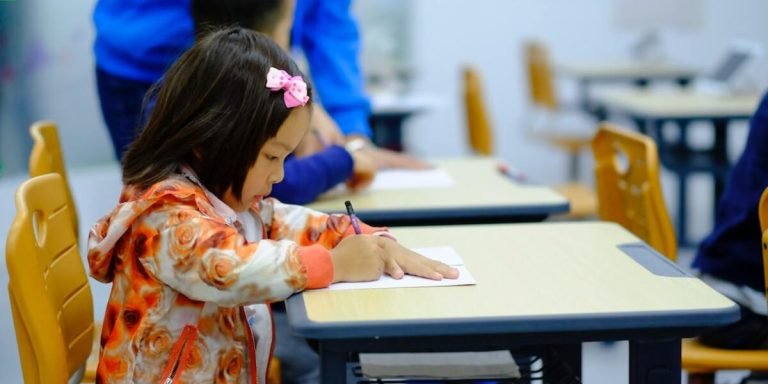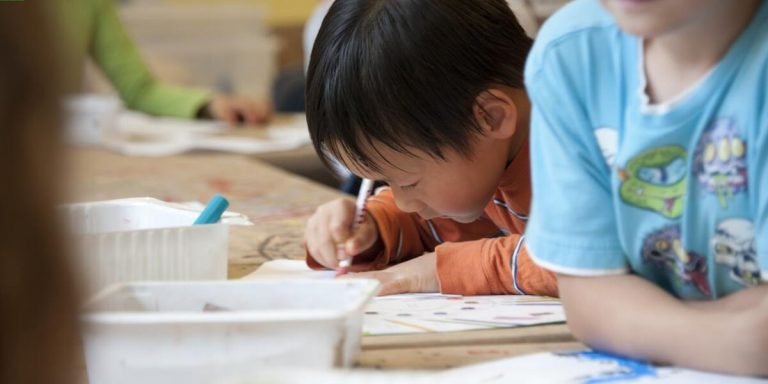Strategies for Reading Comprehension: A Comprehensive Guide for Parents and Educators
In this modern age, children of all ages are interacting with written content more often than ever before. However, reading without comprehension can render these interactions fruitless. That’s why it’s vital to understand and implement effective strategies for reading comprehension right from the elementary school stage.
This comprehensive guide focuses on practical strategies designed specifically to boost a child’s ability in understanding what they read comprehensively—whether it be their textbooks or any other form of narrative. For educators and parents alike, honing this skill within your young ones could significantly impact their overall learning trajectory.
Did you know?
Contrary to popular belief, reading comprehension isn’t just about understanding words and sentences. The National Reading Panel suggests that effective comprehension involves active engagement with the text through strategies like questioning, summarizing, and predicting.
Maximizing Reading Comprehension in Elementary Classrooms
Ensuring reading comprehension in youngsters is a vital aspect of elementary school education. When it comes to maximizing this process, applying beneficial strategies like interactive learning and simulations can be pivotal. In 2023, teachers across the globe are focusing on integrating innovative methodologies that promote deeper understanding among students while they engage with text.
One such strategy gaining popularity involves introducing complex texts gradually at an early age rather than waiting for them to reach higher grade levels. This serves dual purposes; it challenges students and fosters their ability to comprehend more difficult passages over time. It’s also crucial not just to focus on decoding words but ensuring our children understand what those decoded sentences signify.
Another effective method revolves around promoting questioning during class reading activities resulting in active engagement from the kids. Instead of allocating all contours of narrative or textual interpretation solely onto educators’ shoulders, let the young ones take charge under guided supervision! Encourage them by setting open-ended questions related to whatever material you’re covering—letting curiosity pave their way towards enhanced comprehension skills.
Remember always that mastering comprehensive reading becomes significantly easier when children view it as something exciting and challenging instead of perceiving it as another chore dictated by classroom rules!
Implementing Group Reading Sessions for Peer Learning
Group reading sessions have significantly revolutionized the approach towards enhancing reading comprehension skills in elementary classrooms. These collaborative sessions serve as one of the most effective strategies for reading comprehension by fostering a supportive and interactive learning environment.
Their implementation begins with grouping students, preferably mixed-ability groups, to encourage peer support and growth. This method enables learners who are proficient at understanding text passages to aid their peers who may struggle. It creates an arena where they can each express their interpretations, clarify doubts, and collectively make sense of new or complex information.
The consistency factor plays a substantial role – regular group readings ensure that the process becomes systematic rather than incidental learning. Engaged participation during these activities enhances focus levels among children making them eager contributors over time.
Yet another powerful tool within this strategy is discussions which facilitate cognitive stimulation among young minds resulting in better retention capacity.
These debates allow kids to explain situations in their own words crafting a deeper understanding materialising into advanced comprehension abilities.
While conducting such meetings it’s essential that educators respect varying thought processes ensuring equal opportunity for every child’s opinion regardless of how different it might be from others.
This instils confidence among pupils boosting self-esteem while building more refined viewpoints strengthening interpretative abilities along Reading Comprehension Lane!
Utilizing Visual Aids to Enhance Text Understanding
Visual aids are a proven tool to boost reading comprehension among elementary students. They help children visualize the content, making it easier for them to understand and remember information.
One effective strategy for reading comprehension is using pictures. Pictorial representations of text can serve as cues that aid in decoding words and understanding complex ideas or themes. For instance, if a student struggles with the word “volcano,” an accompanying picture could make it clear what the term signifies.
Maps also fall under valuable visual aids used in classrooms globally now more than ever before given our increasing reliance on digital learning platforms due to recent events such as pandemics like COVID-19 and climate change related school closures around 2023. Maps encourage spatial thinking, allowing learners to correlate locations mentioned within texts thus granting even deeper connections between real-world locations and their respective stories.
Another visually engaging strategy includes creating storyboards – sequential illustrations that breakdown narratives into bite-sized segments providing simplistic overviews of plots which facilitate increased absorbance of literary elements such as characters or settings thereby simplifying otherwise intricate narrative structures especially beneficial while exploring genres like science fiction or fantasy extensively loved by younger readers but often challenged by their complexity.
Graphical organizers represent another crucial instrument promoting enhanced knowledge retention extending beyond mere literacy skills toward developing analytical abilities essential across various academic fields steadily gained importance particularly throughout this decade marked by rapid technological advancements demanding competent critical thinkers at every occupational level hence starting early fundamentally matters more today than ever before!
Innovative Approaches to Strengthen Literacy Skills
The realm of elementary school education is rapidly evolving, and one area that consistently requires attention is enhancing literacy skills. In this contemporary era (2023), where information accessibility has exponentially increased, innovative approaches are paramount to fostering strong reading comprehension among young learners.
One such innovative approach encompasses the integration of technology in classrooms. By leveraging interactive and immersive game-based learning platforms tailored for youngsters’ psychological development phase, educators can hone their students’ concentration levels robustly. This method naturally leads to enhanced understanding as kids become more engaged with lessons presented in a playful yet educative format; hence they comprehend better what they read.
Active Learning strategies, stemming from experiential pedagogy norms, play a crucial role in modern education. These strategies:
- Promote classroom activities that enhance children’s critical thinking skills
- Strengthen their understanding of language nuances
- Significantly improve reading comprehension abilities.
Using stories or practical situations allows youngsters to deeply assimilate concepts, as active learning turns abstract ideas into relatable circumstances.
Incorporating Technology Tools for Interactive Reading Activities
In the current digital age, incorporating technology tools to strengthen literacy skills has become an indispensable part of elementary school education. One effective way is by using these innovative platforms for interactive reading activities that directly impact students’ strategies for reading comprehension.
E-books are one such tool that can revolutionize how a child learns and understands text. They go beyond traditional printed books as they come with features like highlighters, bookmarks, in-built dictionaries and note-taking abilities which make them user-friendly even to early readers. Coupled with vivid graphics and animation capabilities, these e-books also appeal visually stimulating student’s interest further in learning to read.
Another significant tech-tool is the use of audio-assisted reading apps. These applications aid children who struggle with complex words or sentences; by listening along while they read significantly improves their pronunciation skills too! The beauty of this tool lies within its perfect blend between traditional book-reading practice and utilization modern-day technological benefits: It encourages independent learning among young learners.
Gamified learning platforms have shown exemplary results when it comes to improving strategies for reading comprehension. With tasks designed specific skill acquisition—such as vocabulary building exercise hidden behind engaging gameplay mechanics—these programs keep kids engrossed until completion goal thereby reinforcing knowledge subtly yet effectively increasing retention rates simultaneously!
Developing Critical Thinking with Structured Question and Answer Exercises
Developing a child’s critical thinking skills contributes significantly in strengthening their literacy skillset, especially reading comprehension. Research has shown that structured question and answer exercises can serve as potent strategies for reading comprehension.
One way to incorporate this practice is by encouraging children to ask questions before, during, and after they read texts. This will allow them to ponder on the content they consume actively – it inspires curiosity which consequently improves understanding of the text.
Engaging your students or children with these types of interactions helps establish an active role in learning instead of just consuming information passively. It stimulates thought processes that lead to better assimilation and recall abilities; hence improved literacy capabilities such as vocabulary development emerge naturally from this strategy.
Let’s consider how you could effectively use these exercises:
1) Start using diverse questioning categories: Questions should be formulated across varying levels – basic factual inquiries progress towards more complex analytical ones. The goal here isn’t necessarily about getting ‘right answers’ but rather focusing on stimulating lateral cognitive processing among kids.
2) Introduce ‘Think Aloud’ sessions: Encourage elementary school learners regularly share thoughts when tackling problem-solving tasks or answering open-ended questions posed over literary pieces. Such measures promote peer learning while ensuring everyone remains engaged throughout discussion periods.
3) Utilize digital technology tools: In 2023’s digitized classroom environments, education apps like Quizlet offer excellent platforms where educators may design customized Q&A drills catering specifically around individual student strengths alongside areas needing further improvement.
Engaging Young Readers Through Creative Methods
Learning how to effectively engage young readers is a crucial component of early education. One key aspect is fostering reading comprehension skills, which can sometimes seem like an insurmountable task for both parents and educators alike. However, with modern pedagogical techniques and creative methods at our disposal in 2023, this challenge becomes more manageable.
Creative learning strategies have revolutionized elementary school education by making it easier for students to understand the material they are reading. Integrating such methods into teaching plans not only sparks interest but also aids in retention of information. For instance, one approach that has proven useful involves using visual aids or storytelling elements that bring stories to life and make them engaging for children who might otherwise struggle with text-based understanding.
In addition, encouraging interactive activities where pupils could share their interpretation or summarize what they’ve understood from the story promotes critical thinking while enhancing their ability to comprehend texts better. Opportunities like these allow children’s cognitive abilities grow as they identify main ideas within texts alongside supporting details – essential prerequisites towards becoming adept readers.
These tried-and-true strategies may vary according to each child’s specific needs yet prove invaluable when tailored correctly during formative educational years; ultimately aiding every student along their unique journey toward improved reading comprehension.
Applying Storytelling Techniques for Better Retention
In the quest for effective strategies for reading comprehension, applying storytelling techniques stands as an impactful practice. It’s a powerful tool that integrates joy and learning in equal measure, making it effortless for young readers to grasp concepts.
Storytelling has been ingrained into human culture since time immemorial. We find comfort and learn valuable lessons through stories. For elementary school children who are just starting their exploration of words, incorporating this ancient art form can ignite curiosity whilst strengthening retention skills.
Here are some ways you can integrate storytelling methods to boost your child’s understanding:
1. **Visual Storybooks:** Use books with vibrant visuals that speak directly to youngsters’ hearts – helping them understand the flow of events better by creating lucid illustrations in their minds.
3. **Interactive Reading:** Allow kids to become part of the story by asking questions or anticipating what will happen next – interacting strengthens their ability to recall key aspects later on.
4. **Vocal Modulation Techniques**: Varying tone and pitch during read-aloud sessions sustains interest while emphasizing essential points which helps children remember distinct elements.
5.Dramatization is also worth exploring along these lines where students get chances to act out scenes—creating embodied experiences related back easily anytime needed.
Crafting Hands-On Projects Related to Reading Material
Crafting hands-on projects related to reading material is a creative and effective method that can enhance strategies for reading comprehension. In this technologically driven age, it’s more significant than ever in 2023 to engage our young readers with innovative approaches.
One avenue of exploration could be pairing each novel or storybook your child reads with an engaging project. This approach ensures the child comprehends what they are consuming by allowing them to demonstrate their understanding creatively, physically, and kinesthetically.
Start simple – if your little one enjoyed a book about animals at the zoo, why not opt for building cardboard animal models? Not only does this reinforce recollection of various characters or themes within the text but also encourages creativity as children bring these elements into tangible existence through crafting.
Perhaps involving technology would pique interests even further. Nowadays kids have access to fun applications like digital drawing platforms where they can illustrate scenes straight from their favorite chapters! The beauty lies in the combination of tech-savviness and literacy skills developing concurrently!
When families get involved too- magic happens! Creating family drama nights based on recently concluded books instils teamwork while warranting imaginative thinking since everyone must work together devising scripts off those stories; parents included!
Let’s remember though: no two children learn identically so customization is key here keeping individual learning styles & preferences front & center e.g., tactile learners might enjoy clay-model making versus using pencils/pens on paper.
Conclusion
In the end, it all circles back to ‘strategies for reading comprehension’. The tools are there: questioning, predicting, visualizing. Like a toolkit in your hand, ready to be opened and explored.
Yet remember these aren’t one-size fits-all solutions; each child has their unique learning curve that needs understanding and patience.
We urge you not just stay limited with this comprehensive guide but also dive deep into other resources available on our website tailored exclusively for educating children. Remember that supporting parents and educators is what we do best! So go forth armed with knowledge – happy teaching!







